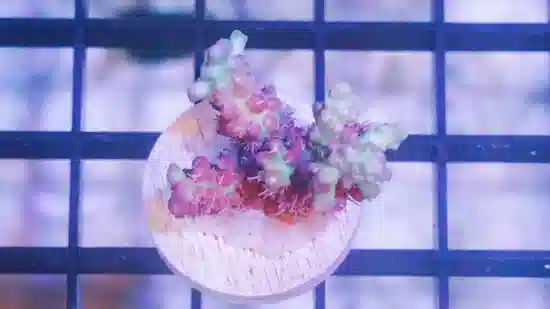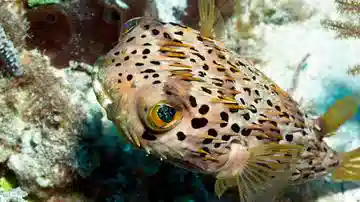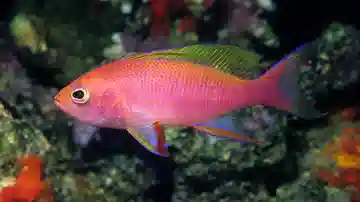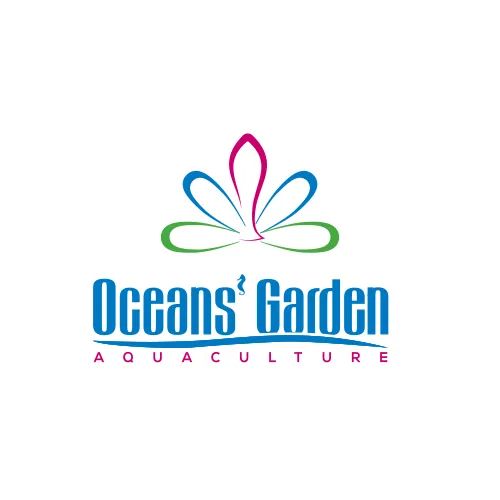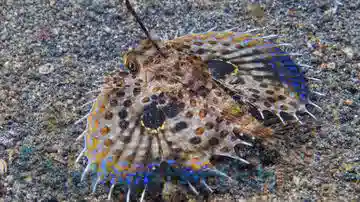Flying Fish - Caribbean
Dactyloptena sp.
(0 Reviews)

Flying Fish - Caribbean
Dactyloptena sp.
(0 Reviews)
{{ item.name }}
Size: {{ item.extra_field_3 }}
${{ getFormattedPrice(item.saleprice) }} ${{ getFormattedPrice(item.price) }}
To join the waiting list, click here
Free Shipping
With
$199.00
or more in Marine Life.
More details...
Flying Fish - Caribbean Care Facts
| Care Level: | Moderate |
|---|---|
| Temperament: | Peaceful |
| Diet: | Carnivore |
| Reef Safe: | With Caution |
| Minimum Tank Size: | 200 Gallons |
| Max Size: | 20 inches |
Flying Fish (Dactyloptena sp.) - A Unique and Captivating Addition to Saltwater Aquariums
Saltwater aquarium enthusiasts seeking a unique and captivating addition to their underwater world will find the Flying Fish (Dactyloptena sp.) an intriguing choice. Known for their distinctive appearance and captivating behaviors, these fish add a dynamic element to saltwater marine aquariums.
Habitat and Origin of the Flying Fish:
Originating from the warm waters of the Atlantic Ocean, the Flying Fish is commonly found in tropical and subtropical regions. Their natural habitat includes coral reefs, rocky shores, and sandy bottoms. As a result, replicating these conditions in a captive environment is essential for the well-being of these fish.
Reef Safety of the Flying Fish:
The Flying Fish is considered coral-safe, but it can eat small fish and invertebrates. Their lack of interest in coral polyps contribute to a harmonious coexistence with reef structures. However caution should be taken when keeping them in reef tanks as they will see small fish as prey.
Size and Lifespan of the Flying Fish:
These fish boast a moderate size, reaching up to 20 inches in length. When provided with proper care, Flying Fish can live for several years in captivity, making them a rewarding long-term addition to any marine aquarium.
Diet of the Flying Fish in Captivity:
Maintaining a balanced diet is crucial for the health of Flying Fish in captivity. They are omnivores, requiring a mix of high-quality pellet or flake food supplemented with frozen or live offerings such as brine shrimp, mysis shrimp, and small crustaceans.
Aquaculture Availability of the Flying Fish:
Flying Fish are not commonly aquacultured, making them a somewhat exclusive addition to the hobbyist's collection. As interest in sustainable practices grows, efforts may increase to breed these fascinating creatures in captivity.
Compatibility of the Flying Fish with Other Fish and Invertebrates:
While generally peaceful, Flying Fish can display territorial behavior. Care should be taken when selecting tank mates to avoid aggression.
Sexual Dimorphism of the Flying Fish:
Distinguishing between male and female Flying Fish can be challenging, as minimal external differences exist. Hobbyists may find observing behaviors such as courtship rituals and nesting activities helpful in identifying gender.
Juvenile to Adult Coloration Changes in the Flying Fish:
Juvenile Flying Fish typically exhibit a more vibrant and varied coloration, with shades of blue, yellow, and orange. As they mature, these colors may become more subdued, giving way to a more elegant and streamlined appearance.
Temperament of the Flying Fish:
Flying Fish are known for their calm and peaceful demeanor. Their gentle nature makes them suitable for community aquariums, provided adequate space, and proper tank mates are chosen.
Tank Requirements for the Flying Fish:
- Provide a minimum aquarium size of 200 gallons for optimal care for Flying Fish.
- A well-established filtration system and regular water changes are essential for optimal water quality.
Water Conditions for the Flying Fish:
- pH: Maintain a pH level between 8.1 and 8.4.
- Salinity ranging from 1.020 to 1.025.
- Water temperature at 72-78°F.
- Provide moderate water flow to simulate their natural habitat.
Other Common Names for the Flying Fish:
Apart from being known as Flying Fish, Dactylopterus volitans is also called the "Helmet Gurnard," emphasizing its distinctive head shape and the prominent pectoral fins.
Five Compatible Tank Mates for the Flying Fish:
- Clownfish (Amphiprion spp.)
- Royal Gramma (Gramma loreto)
- Coral Beauty Angelfish (Centropyge bispinosa)
- Foxface Rabbitfish (Siganus vulpinus)
- Flame Angelfish (Centropyge loriculus)
Why Choose Flying Fish from Saltwaterfish.com:
Saltwaterfish.com prides itself on providing healthy and responsibly sourced marine life. Flying Fish enthusiasts can trust Saltwaterfish.com to deliver high-quality specimens backed by their commitment to ethical and sustainable practices in the aquarium industry.
In conclusion, the Flying Fish (Dactylopterus volitans) is a captivating addition to saltwater aquariums, offering hobbyists a unique blend of elegance and peacefulness. Careful consideration of tank mates, adherence to specific tank requirements, and sourcing from reputable suppliers like Saltwaterfish.com ensure a rewarding and sustainable experience for enthusiasts.
Currently Flying Fish - Caribbean does not have any reviews.


